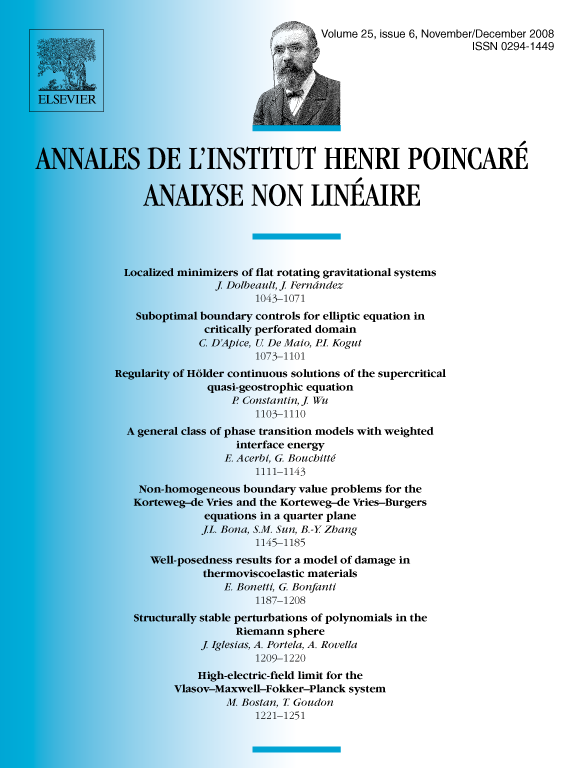Non-homogeneous boundary value problems for the Korteweg–de Vries and the Korteweg–de Vries–Burgers equations in a quarter plane
S.M. Sun
Department of Mathematics, Virginia Polytechnic Institute and State University, Blacksburg, VA 24061-4097, USABing-Yu Zhang
Department of Mathematical Sciences, University of Cincinnati, Cincinnati, OH 45221-0025, USAJerry L. Bona
Department of Mathematics, Statistics & Computer Science, University of Illinois at Chicago, Chicago, IL 60607, USA

Abstract
Attention is given to the initial-boundary-value problems (IBVPs)
for the Korteweg–de Vries (KdV) equation and
for the Korteweg–de Vries–Burgers (KdV-B) equation. These types of problems arise in modeling waves generated by a wavemaker in a channel and waves incoming from deep water into near-shore zones (see [B. Boczar-Karakiewicz, J.L. Bona, Wave dominated shelves: a model of sand ridge formation by progressive infragravity waves, in: R.J. Knight, J.R. McLean (Eds.), Shelf Sands and Sandstones, in: Canadian Society of Petroleum Geologists Memoir, vol. 11, 1986, pp. 163–179] and [J.L. Bona, W.G. Pritchard, L.R. Scott, An evaluation of a model equation for water waves, Philos. Trans. Roy. Soc. London Ser. A 302 (1981) 457–510] for example). Our concern here is with the mathematical theory appertaining to these problems. Improving upon the existing results for (0.2), we show this problem to be (locally) well-posed in when the auxiliary data is drawn from , provided only that and . A similar result is established for (0.1) in provided lies in the space . Here, is the weighted Sobolev space
with the obvious norm (cf. Kato [T. Kato, On the Cauchy problem for the (generalized) Korteweg–de Vries equations, in: Advances in Mathematics Supplementary Studies, in: Studies Appl. Math., vol. 8, 1983, pp. 93–128]). Both local and global in time results are derived. An added outcome of our analysis is a very strong smoothing property associated with the problems (0.1) and (0.2) which may be expressed as follows. Suppose and that for some and with , lies in (respectively ). Then the corresponding solution of the IBVP (0.1) (respectively the IBVP (0.2)) belongs to the space (respectively ). In particular, for any with , if has compact support and , then the IBVP (0.1) has a unique solution lying in the space .
Cite this article
S.M. Sun, Bing-Yu Zhang, Jerry L. Bona, Non-homogeneous boundary value problems for the Korteweg–de Vries and the Korteweg–de Vries–Burgers equations in a quarter plane. Ann. Inst. H. Poincaré Anal. Non Linéaire 25 (2008), no. 6, pp. 1145–1185
DOI 10.1016/J.ANIHPC.2007.07.006